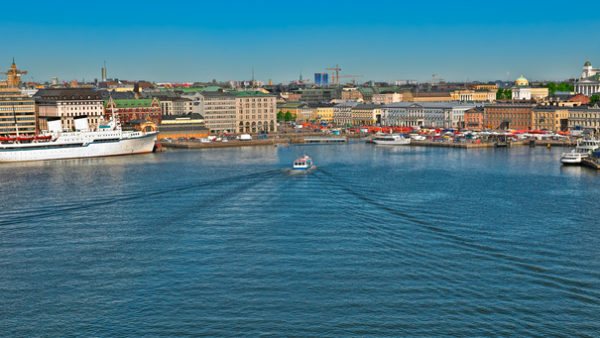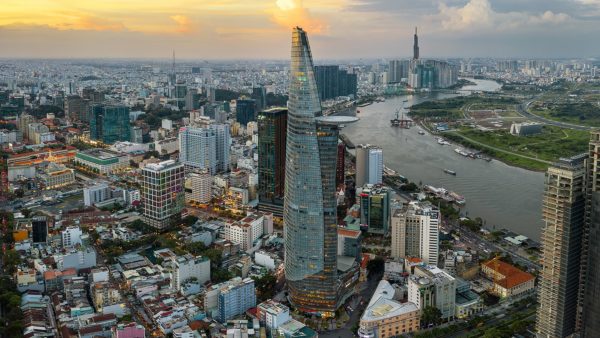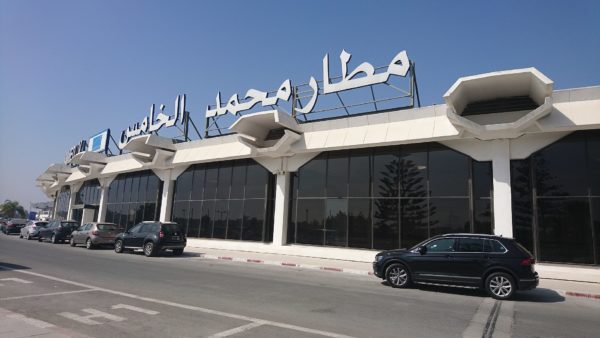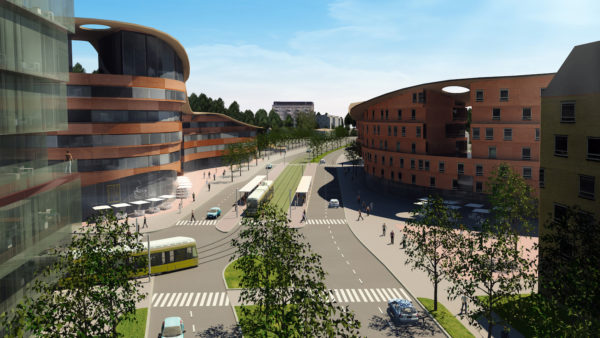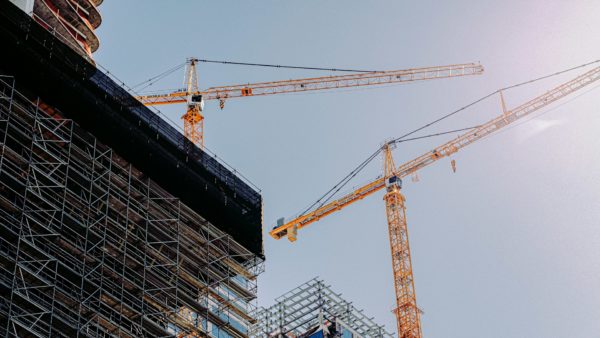It’s already set to be the most expensive World Cup in history, but costs for Russia 2018 could spiral out of control as the country’s economic woes feed the dynamic of the ‘mega-event syndrome’, expert says.
Russia’s plans for the 2018 World Cup are more ambitious than they need to be.
Fifa asks host countries to make eight stadia available, and Russia promised 12.
Of these, two are already complete, the one in Sochi needs its roof taken off, and two more are being upgraded. Seven will be built from scratch.
Not surprisingly, this ambitious programme is behind schedule.Â
In March this year, sports minister Vitaliy Mutko said that the pace of designing the stadia gives "cause for alarm".
"Deadlines are being broken," he said. "There are problems in every region."Â
The site of one stadium, in Russia’s Baltic exclave, Kaliningrad, was finally settled only earlier this month, four years after Russia won its World Cup bid.
For the geographer Martin Müller, the delays are classic symptoms of ‘mega-event syndrome’, in which countries who host big sporting events get sucked into a spiral of rising costs and increasing dysfunction. (His paper on the syndrome can be found here.)
Mega events are supposed to generate wealth, modernise economies and boost the prestige of political regimes.
But Müller, who is Swiss National Science Foundation Professor at the University of Zurich, says that most of the time they do the opposite. They drain the state’s coffers, stall and even reverse economic reform, and create severe hardship for ordinary people.
In Russia, whose World Cup preparations Müller is currently studying, the effects of ‘mega-event syndrome’ have been severely amplified by the economic crisis there, brought on by plummeting oil prices and Western sanctions.
Müller told GCR that the government risks losing control of World Cup costs because it is being held to ransom by the organisations it must rely on to get the stadia and infrastructure built.Â
That the organisations themselves are often led by cronies of the Russian president, Vladimir Putin, makes no difference to the scale of their demands, Müller says.
In fact, the more importance Putin places on tournament preparations, the more intense will grow the syndrome’s dynamics.Â
Slippery costs
Even before Russia’s economic woes, the 2018 World Cup was on track to be the most expensive in history.
A 2013 government act fixed the budget at $21bn (RUB 660 billion, at exchange rates then), which covers the stadia, necessary transport projects, and other costs such as security and energy supply.
The only way Russia might abandon the World Cup would be as a result of obviously external factors beyond its control, such as a boycott– Martin Müller, Swiss National Science Foundation Professor at the University of Zurich
But the projected costs have proven slippery. Müller points out that between Russia winning the bid in 2010 and June 2014, forecasts for stadium expenditures more than doubled, from $2.8bn to $6.9bn. On those projections, the 12 Russian stadia will be more expensive than the 20 built for the World Cup 2002 in Korea and Japan, accounting for inflation, he says.
As of June, the projected cost per seat of delivering the 2018 stadia was $11,600, nearly four times the cost per seat for the 2006 World Cup in Germany and nearly twice the cost of last year’s tournament in Brazil. (More on cost comparisons can be found here.)
Now that Russia’s economy is in crisis, with skyrocketing interest rates, inflation and the rouble nearly halving in value, there will be further upward pressure on prices, Müller says.Â
The elaborate dance
A key to the mega-event syndrome at work can be found in the programme delays. Müller believes they stem in part from the elaborate dance now underway between the builders and the government as they bargain over prices.Â
The government is desperate to keep costs down but the builders know they can hold out for more.
Already there have been public standoffs. In August, Gennady Timchenko, owner of one of Russia’s largest contractors, Stroytransgaz – and a friend of Vladimir Putin – threatened to withdraw from building two stadia unless the government threw in an extra $110m for them.
"Stroytransgaz is playing for time," Müller said. "The government has to meet a deadline, so the longer they delay the process, the more they can ask for the stadium. That became public in the case of Stroytransgaz, but it will be going on with the other stadia too. There are big incentives in any World Cup to build more slowly than you could in order to extort additional money from the government."
The dire economic situation will give everyone in the stadium supply chain more bargaining power. The halving of the value of the rouble will further drive up prices for much of the specialist equipment and know-how that goes into building a stadium. Â
Loyalty inflation
Internally, the country’s high interest rates will do even more damage.
On 15 December, in a bid to avert a currency crisis, Russia’s central bank raised the benchmark interest rate to 17%, a drastic measure coming just days after inching it from 9.5% to 10.5%. There have been six rate hikes this year.
"That makes securing credit next to unaffordable for investors," Müller said. "They would be taking on debt at rate of 22% to 25% so you’d have to have a very, very profitable project to make the investment worth it.
"This will reduce competition for projects, which will further drive prices up. International contractors are reluctant to get involved because the rollercoaster ride of the rouble makes calculations unpredictable. So because of the risk involved, whoever steps forward will be in a position to ask higher prices."
Müller said such bargaining was to be expected in a ‘neo-patrimonial’ state of the sort Russia has become, where, in return for loyalty, an authoritarian leader doles out slices of the resource pie to friends.Â
"If the risks are high and the outlook is grim, the price of loyalty goes up," he said. "If the economy is going to grow for the next three years you know your investments will make money so you’re happy to ask for less. But if the central bank is talking about the economy shrinking next year by 4% or 5% you know you’re going to lose money, so you ask for more."Â
Won’t back down
So what the final cost will be is anyone’s guess. And yet, at a time when Russia most needs to conserve its resources, it cannot back out of hosting the tournament.
"That would be a massive loss of face and a sign of weakness," Müller said. "When I talk to local organisers they are quite defensive about this.
"It’s interesting that a couple of months ago Fifa offered Russia the option of dropping two stadia, but Russia declined. Instead, the capacity of two stadia, at Ekaterinburg and Kaliningrad, was reduced from 45,000 to 35,000, which translates into only a slight reduction in overall cost.
"The only way Russia might abandon the World Cup would be as a result of obviously external factors beyond its control, such as a boycott."
One external factor that can be excluded right away is Fifa, Müller said. Even though Fifa’s back is against the wall over its handling of Michael J. Garcia’s report on allegations of corruption related to, among other things, Russia’s and Qatar’s bids to host the tournament, the body will be very motivated to keep the 2018 World Cup where it is.
"Fifa highly prefers not to have the Russia decision, at least, challenged because Russia is now in full swing in terms of preparations and Fifa would have to find another venue, so its secrecy over the report so far is understandable," he said.Â
Grotesque
The tragedy for Russians is that so much money will be thrown away on stadia that will be obsolete the minute the final whistle blows.
Russian stadia are already oversized. The 15 clubs in the country’s premier league use only about 60% of their capacity. Compared to their European counterparts, Russians just aren’t that keen on football. Average turnout to a game is 12,000, Müller says, adding that demand for tickets has not grown since the early 2000s despite a rise disposable income since then.Â
And yet Russia will now build seven brand new stadia and expand others, ramping up total seat capacity in the country by a third. An example of the waste Müller called "grotesque" is the Central Stadium in Ekaterinburg. Originally built in 1957 in Stalinist neoclassicist style, it underwent an $82m renovation that finished in 2011, just after Russia won the World Cup bid.Â
Now it will close again for its World Cup revamp. The plan had been to boost seating capacity from 27,000 to 44,000, a project costed at $474m. The eventual cost should be mitigated somewhat by the downward revision to 35,000 seats mentioned earlier, but many will still find the expenditure difficult to comprehend.
One such person is Evgeniy Roizman, an opposition politician who was elected mayor of Ekaterinburg in 2013. Müller records him saying: "I don’t know if it’s worth spending 12 to 15 billion [USD $390 to $490 million] for four games in Ekaterinburg. I wouldn’t hurry to open the city budget to fund an enormous international event that the city might not be interested in."
Müller says that in a country where most mainstream media are state controlled or influenced, and where opposition is met with state intimidation, public expressions like Roizman’s are extremely rare. Â
Russia, it seems, is fated to press on with its World Cup. During his three-hour end-of-year press conference on 18 December, Vladimir Putin insisted Russia would not skimp on the tournament.Â
"This is just an extra reason for the development of Russia and we can spare money on it," he said.Â
Bottomless pit
The World Cup on its own will not bust Russia. But nor can Russia have everything it wants for the price it likes.Â
To pay for it, Müller said, other projects around the country will face the axe. The $40bn South Stream gas pipeline to Europe, which was probably uneconomic anyway, has been scrapped. Others will include ordinary infrastructure projects that might improve life for ordinary people.
Another serious drain on Russian coffers is Crimea. After annexing the peninsula in March Russia assumed all the costs of running the territory, including public sector pay, pensions and social provisions. By August the unexpected bill had reached $4.5bn, according to the Warsaw-based Centre for Eastern Studies (Polish acronym OSW).
Putin wants Crimea to showcase Russian-enabled prosperity, but it has big infrastructure problems. Its energy system needs to be de-linked from Ukraine and hooked up to Russia. Water, supplied by Ukraine, is scarce. In May Russia’s economic development minister Alexei Ulyukayev said the federal government would spend $4.5bn a year on Crimea’s energy, water and transport networks.
That doesn’t include the thing most needed to fuse Crimea to Russia, though – the 19-km vehicle and train bridge across the Kerch Straits that would free the movement of goods and people from the current, sluggish ferry service.
In October Putin ordered government agencies responsible for major projects to get it built by the end of 2018.
But there may be some issues with that. On 9 December one of the contractors tipped to build it, Stroytransgaz’s Gennady Timchenko, bristled with independent will and said he wouldn’t touch the project, which the government has decreed would cost $6.17bn.
"I do not want to run reputational risks," he told state-run TASS news agency. "It is unclear what the cost will be because there is no ready project. Nobody understands the geological features there. And neither do we. That is why the story is too risky."
According to TASS, the government will not appoint the Federal Agency for Special Construction (Spetsstroy) to build the bridge because it is tied up with pushing through the troubled Vostochny Cosmodrome spaceport project. That swings the spotlight onto another big infrastructure firm, Mostotrest, controlled by the billionaire brothers Arkady and Boris Rotenberg, Putin’s one-time judo sparring partners.
Crimea will be very expensive. OSW referred to it as a "bottomless pit".Â
The Russian government’s idea had been that the region would soon start paying for itself. It would become a special economic zone and gear up as a tourist destination, which would bring foreign investment flooding in.Â
But the latest sanctions by the US, the EU and Canada specifically banning investment in Crimea, announced 19-20 December, will severely limit the investment pool.
Built by fiatÂ
For the World Cup, time is short. The first match takes place in three years and six months, a relatively compressed period in which to build and commission seven brand new stadia.
Meanwhile, Putin is not one for being backed into a corner. In the blink of an eye, the dance Müller identifies between government and stadia suppliers could turn into a judo match. We could see the World Cup building programme being brought under sudden state control, with stadia built by fiat and previously cocksure construction bosses purged or arrested.Â
The sense of urgency and crisis stoked by the mega-event syndrome, as Müller sees it, makes such outcomes possible. A similar fate befell the spaceport project.
Another possibility is that Putin the tactician may bypass his cronies and invite Chinese state-owned firms in to build some of the stadia, or indeed the Kerch Straits bridge. They have plenty of experience, cash, and appetite for risk – and China may welcome the opportunity further to bind its new energy-rich, credit-starved friend to itself.
Whatever happens, 2015 will be an interesting year for mega events.Â
Photograph: Moscow Mayor Sergei Sobyanin, left, Russian President Vladimir Putin and Fifa President Sepp Blatter at Moscow’s Luzhniki stadium, being rebuilt, on 28 October 2014 (Dmitry Azarov/Kommersant/Getty)





